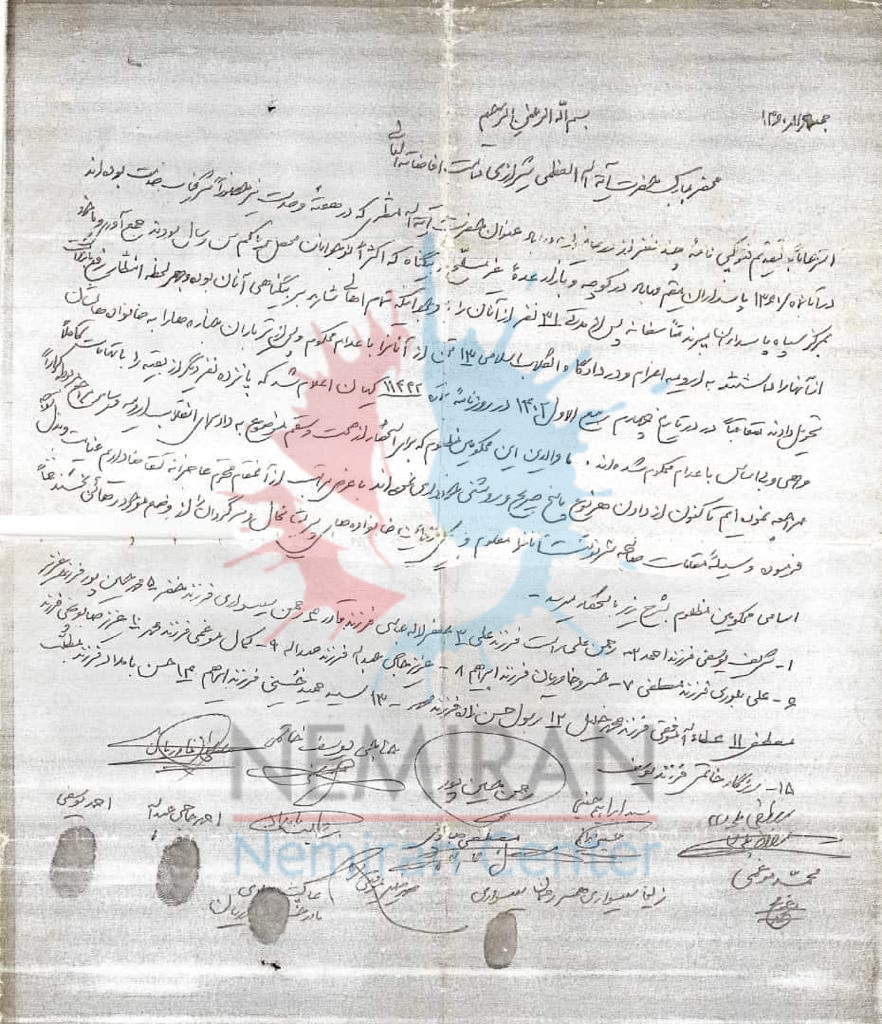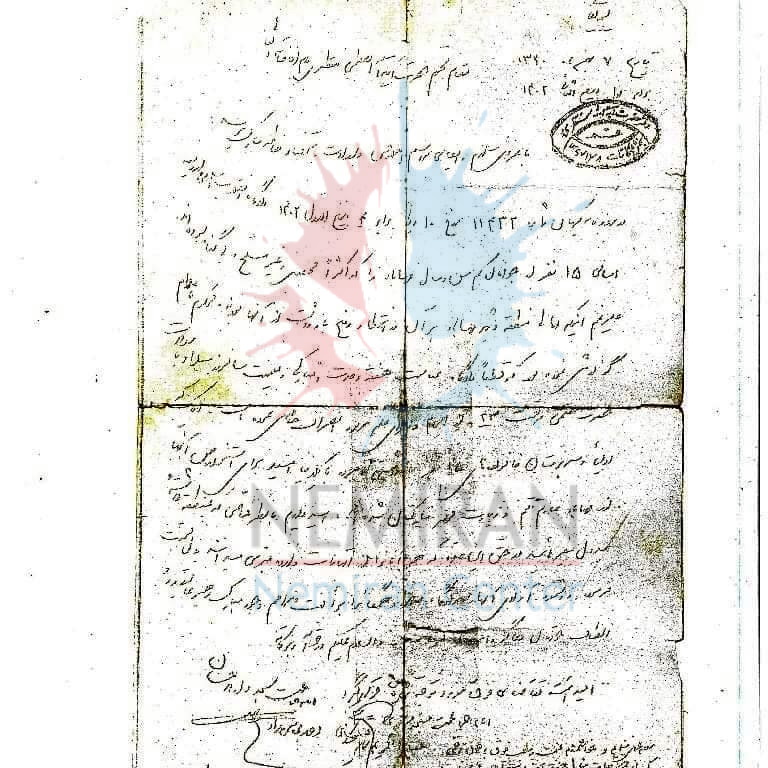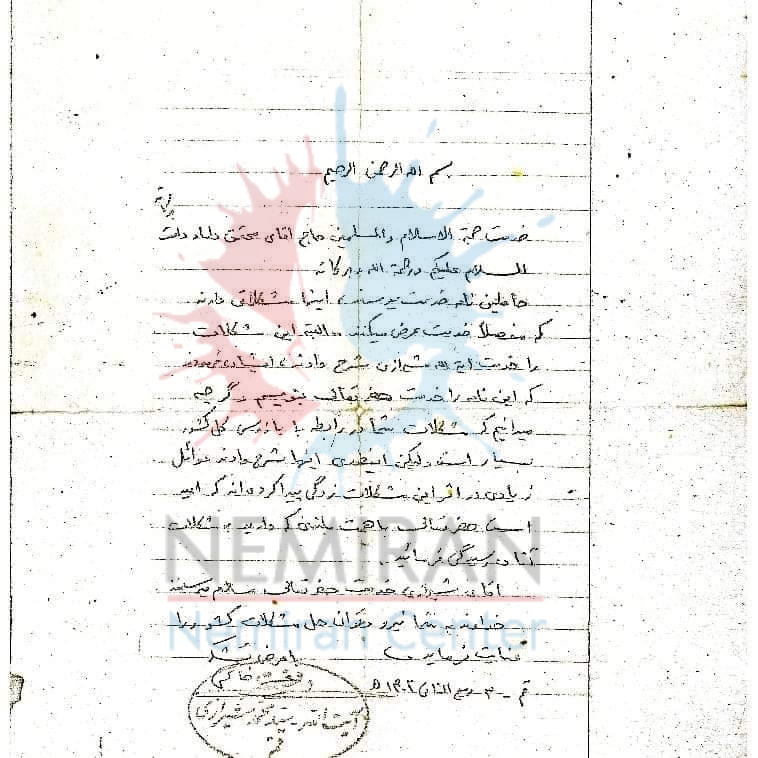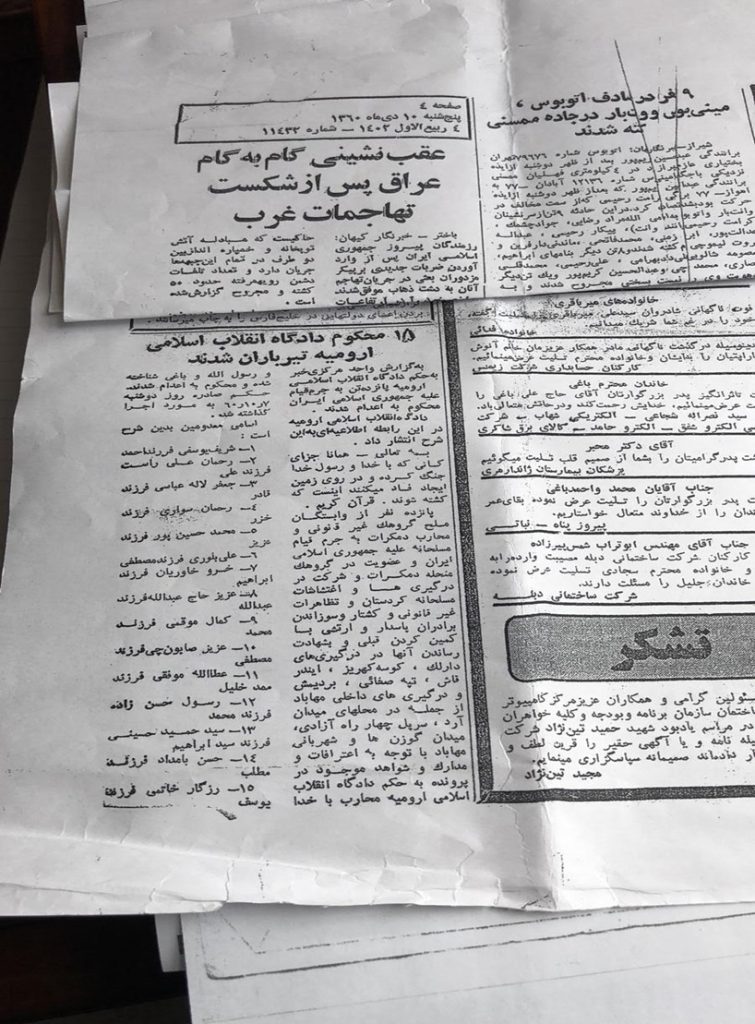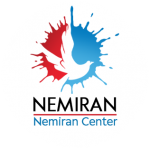Sharif Yousefi, the son of Ahmad (father) and Zeinab (mother), was born on 19/7/1343 Iranian Calendar (11/10/1964) in the village of Kalbarazakhan in the district of Mahabad. Although the Yousefi family was poor, they sent their children to Mahabad city to get education.
Sharif was arrested by security agents early in the morning a few months before the execution when he went to a bakery to buy bread.He was transferred to the Mahabad Intelligence Office for interrogation. After enduring a lot of torture in Mahabad prison, he was transferred to Urmia prison. One of Sharif’s comrades who was arrested at the same time describes him as follows:
“Sharif came to me and told me that he had been tortured so much that he could not stand all this torture. He had told the interrogators that he would confess any accusation and would sign any paper so that they would execute him as soon as possible.”
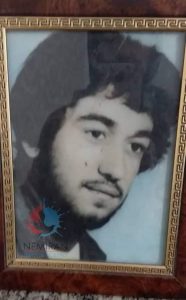
The interrogators had already prepared a written confession for him. In that forced confession Sharif had been accused of being involved in the “Berdish” armed conflict using anti-tank missile. According to this accusation, he was sentenced to death and was executed along with 14 innocent young people from Mahabad on 7/11/1360 Iranian Calendar (27/1/1982) at the age of seventeen.
His friends recall him so: “He was a calm, humble and reliable person. His heart beat for the oppressed people and deprived of freedom. Sharif’s personality had fascinated people around him. Everyone who saw him for the first time will never forget him.”
The newspaper Ettelaat dated 10/11/1360 (30/1/1982) wrote in a statement issued by the Islamic Revolutionary Court of Urmia: “In the name of God, killing is the punishment of those who fight God and his prophet and spread corruption, (citation from Quran).
Fifteen people who were armed supporters of the illegal and militant Democratic Party of Iranian Kurdistan were ambushed and charged with armed insurrection against the Islamic Republic of Iran, membership in the disbanded Democratic Party, participation in activities, riots, illegal demonstrations, massacres, and burning of Revolutionary Guards and army soldiers. Their martyrdom in the villages of Darlak, KuseKahriz, Agriqash, Safaei Hill, Bardarshan and clashes inside Mahabad city in the areas of Ard Square, Azadi Crossroads, Ahangaran Square and Mahabad police based on their own confessions and the available evidence and witnesses in their cases. The Revolutionary Court of Urmia recognizes them as apostates and enemy of God and his prophet according to these evidences and testimony of the witnesses. They were sentence to death. The sentence was carried out on Monday on 7/11/1360 Iranian Calendar (27/1/1982).The names of those executed are as follows:
1. Sharif Yousefi, son of Ahmad
2. Rahman Ali Rast, son of Ali
3. Jafar Laleh Abbasi, son of Qader
4. Rahman Savareh, son of Khedr
5. Mohammad Hosseinpour, son of Aziz
6. Ali Blouri, son of Mostafa
7. Khosrow Khavarian, son of Ebrahim
8. Dear Haj Abdullah, son of Abdullah
9. Kamal Mughami, son of Mohammad
10. Aziz Sabounchi, son of Mostafa
11. Ataullah Mofaqi, son of Mohammad Khalil
12. Rasool Hassanzadeh, son of Mohammad
13. Seyed Hamid Hosseini, son of Seyed Ebrahim
14. Hassan Bamdad, son of Motaleb
15. Rezgar Khatami, son of Yusuf
The families of the victims mourned and were saddened by the news. Relatives and acquaintances of the victims’ families gathered around them. The grieving families left for Urmia to collect the bodies of their beloved sons. Government officials said that they will not hand over the bodies of the victims until the families will pay a compensation for the bullets which were used for the executions. The families were also forced to give sweets as a gift to the executioners as a reward. Prison officials and Islamic judicial authorities gave no information about the victims. They did not even hand over their corpses to the bereaved families. They had been buried secretly anonymously. The judicial officials just said: “Do not be sad, we have buried the bodies according to Islamic law.”
This degrading inhuman statement did not soothe the bereaved families. After about seven months of continuous follow-up and numerous visits to government officials in different cities and writing letters and numerous requests, a delegation came from Tehran to settle the issue.
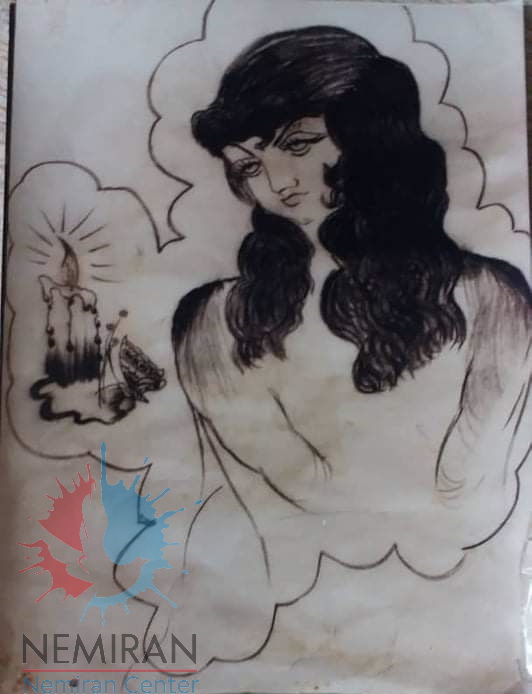
According to documents which are in the possession of the Nemiran Center, after a great deal of effort, the corpses were exhumed and shown to the families. They had been buried on the shores of Lake Urmia. All the bodies were wrapped in a nylon case and buried without removing their clothes and shoes.
Sharif’s father describes the situation as following: “Sharif’s body was wrapped nylon case. His arms and legs were broken. His body was totally deformed. I could not believe that this was my son’s body.”
Later, the security force of regime transferred the bodies of the victims to Urmia and reburied them secretly in Bagh Rezvan Cemetery, Block 19, Urmia City. After the burial, the families of the victims were informed where the victims have been buried. But families doubt whether the graves belong to their loved ones.
The efforts of the families to prove the innocence of their loved ones reached high-ranking officials of the Islamic Republic. It turned out that all the slanders of the Urmia court that were attributed to these victims were completely baseless. The officials of the Islamic Republic of Iran tried to compensate these baseless slanders, which cost the lives of these innocent people, by offering money to their families. By promising to donate cars and other financial help, they tried to prevent the families of the victims from pursue this barbaric crime. But these families proudly rejected the regime’s promises and called for justice. Their legitimate request was never responded. The Islamic Republic added this crime to the long list of its crimes.
Sharif’s family has no other memories than a few photos of him and a painting designed by Sharif himself. In fact, there is no grave of their beloved son where they could heal their hearts and shed tears.
The Nemiran Center commemorates these fifteen immortals and all other immortals of Kurdistan and embraces the families of these noble humans.
Documents
